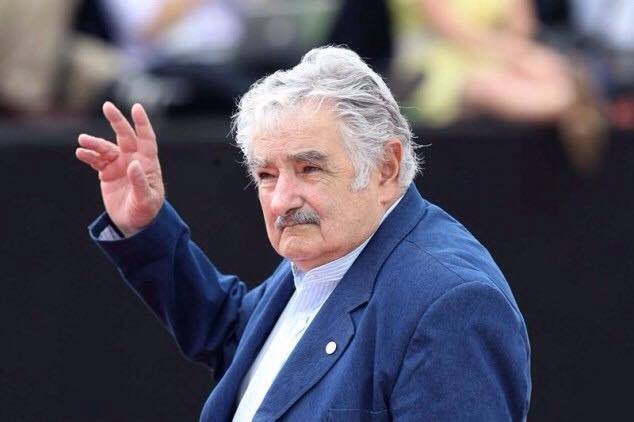Comparing Brand Building Strategies: Sinner And Federer

Table of Contents
Federer's Brand Building: A Legacy of Elegance and Grace
Roger Federer's brand transcends mere athletic achievement; it's synonymous with elegance, grace, and unwavering sportsmanship. His meticulously crafted brand reflects a long-term vision and strategic partnerships.
Masterful Endorsement Strategy
Federer's endorsement portfolio is a masterclass in brand alignment. His long-term partnerships, such as those with Rolex and Uniqlo, aren't merely transactional; they're deeply intertwined with his personal image.
- Rolex: This partnership epitomizes luxury, precision, and timeless quality – values perfectly mirroring Federer's on-court style and career longevity. The Federer endorsements with Rolex have significantly boosted both brand values.
- Uniqlo: This collaboration showcases a simpler, more understated elegance, reflecting Federer's transition into a later stage of his career. This demonstrates the adaptability crucial for long-term sponsorships.
- Selection Criteria: Federer consistently chooses brands that align with his sophisticated persona. He prioritizes luxury brand collaborations that resonate with his target audience and reinforce his brand image. This careful brand partnership selection is a cornerstone of his success.
The impact of these carefully curated Federer endorsements is undeniable. They have significantly elevated his brand value and cemented his position as a global icon, extending far beyond the tennis court.
Cultivating a Positive Public Image
Federer's impeccable on-court demeanor and unwavering sportsmanship have been instrumental in building a positive public image. His actions speak louder than words, shaping perceptions that extend beyond the tennis world.
- Sportsmanship: Federer’s renowned grace under pressure and respect for opponents have cultivated a loyal fanbase that appreciates his integrity both on and off the court. This positive public relations strategy is invaluable.
- Roger Federer Foundation: His philanthropic efforts, particularly through the Roger Federer Foundation focused on education and opportunities for children in Africa, contribute significantly to his positive brand image. His commitment to Federer philanthropy showcases a humanitarian side that enhances his appeal.
This carefully constructed positive brand image, fueled by on-court performance and off-court actions, has cemented Federer’s status as a role model and enhanced his overall brand value.
Social Media Presence and Engagement
While Federer's social media presence is less prolific than some younger athletes, his strategic use of platforms reinforces his brand image.
- Controlled Narrative: His posts are curated, often showcasing highlights of his matches or his philanthropic activities, maintaining a consistent and positive brand message.
- Limited Personal Exposure: Unlike some athletes who share highly personal details, Federer maintains a level of privacy, which contributes to the perception of his sophisticated and reserved image. This controlled approach allows him to manage his Federer social media presence effectively.
His approach, though less frequent than others, highlights the potential for impactful social media strategy for athletes that prioritizes quality over quantity.
Sinner's Brand Building: A Rising Star's Strategic Approach
Jannik Sinner's brand building strategy reflects a younger generation's approach, leveraging digital platforms and targeted endorsements to establish a strong presence. Comparing brand building strategies between Federer and Sinner reveals interesting generational differences.
Strategic Endorsement Selection
Sinner’s endorsements reflect a strategic approach targeting a younger demographic. This contrasts with Federer's focus on luxury brands.
- Target Audience: Sinner's endorsements often align with brands popular among younger consumers, reflecting an understanding of his primary fanbase. This targeted marketing approach is key to building brand loyalty among a younger demographic.
- Early Brand Building: Sinner’s strategy emphasizes building a strong brand early in his career, maximizing opportunities to establish himself in the market while his star is rising. This proactive approach to brand selection highlights the importance of swift action in early career stages.
- Difference in Approach: Unlike Federer’s long-term, legacy-building partnerships, Sinner's strategy is more focused on building rapid brand recognition and appeal among a specific market segment. This reflects a difference in emerging athlete brand building compared to established stars.
Leveraging Social Media for Brand Growth
Sinner's active social media presence is a key differentiator. His engagement with fans is frequent and genuine.
- Active Engagement: Sinner actively interacts with his followers, creating a sense of community and enhancing brand loyalty. His frequent posts provide valuable content, maximizing his brand building on social media.
- Platform Utilization: He utilizes platforms like Instagram and Twitter to share behind-the-scenes content, match highlights, and personal updates, creating a relatable and engaging persona. This approach highlights the potential of athlete social media marketing.
- Era and Audience: Compared to Federer's more reserved approach, Sinner's active social media use reflects the importance of digital engagement for connecting with a younger, digitally native audience. This demonstrates the impact of era and Sinner social media strategies.
This contrasts sharply with Federer’s more controlled and less frequent social media strategy, showcasing generational shifts in comparing brand building strategies.
Building Brand Awareness Through Performance
Sinner's rapid ascent in the tennis rankings is a crucial part of his brand building. Sinner performance directly contributes to his growing visibility and marketability.
- On-Court Success: Consistent high-level performance fuels his popularity and attracts endorsements, sponsorship deals, and media attention. Winning generates significant opportunities for an athlete to leverage their on-court success for brand building.
- Momentum: Sinner’s ability to consistently deliver strong performances builds momentum and excitement around his brand. This rapid trajectory in athlete brand building through performance sets him apart.
Key Differences and Similarities in Their Brand Building Strategies
| Feature | Federer | Sinner |
|---|---|---|
| Endorsements | Luxury brands, long-term partnerships | Younger-focused brands, targeted marketing |
| Social Media | Controlled, curated presence | Active, highly engaged presence |
| Public Image | Elegance, grace, sportsmanship, philanthropy | Rising star, relatable, dynamic |
Federer's strategy focuses on building a timeless, sophisticated brand through long-term partnerships and a carefully cultivated image. Sinner's approach prioritizes rapid growth through digital engagement and targeted marketing to a younger demographic. Both demonstrate effective marketing strategies comparison based on their individual goals and circumstances. The effectiveness of each approach is evident in their respective brand values and market perceptions.
Conclusion: Lessons in Building a Lasting Brand in Professional Tennis
Comparing brand building strategies of Federer and Sinner reveals crucial insights into building lasting brands in professional tennis. Federer’s approach emphasizes enduring partnerships and a timeless image, while Sinner showcases the power of digital engagement and rapid growth strategies. Both highlight the importance of understanding your target audience and tailoring your approach accordingly. The key takeaway is that successful brand building strategies for athletes require adaptability, strategic partnerships, and a clear understanding of market dynamics. Learn more about effective comparing brand building strategies for athletes and apply these insights to your own brand development. This detailed look at successful brand building and tennis marketing should provide valuable lessons for all aspiring athletes aiming to build strong personal brands.

Featured Posts
-
 Iceland Calls For Israels Eurovision Expulsion Over War Crimes Allegations
May 14, 2025
Iceland Calls For Israels Eurovision Expulsion Over War Crimes Allegations
May 14, 2025 -
 Ukrayina Na Yevrobachenni 2024 Data Translyatsiya Ta Spisok Uchasnikiv
May 14, 2025
Ukrayina Na Yevrobachenni 2024 Data Translyatsiya Ta Spisok Uchasnikiv
May 14, 2025 -
 Ex Presidente De Uruguay Jose Mujica Fallece A Los 89 Anos
May 14, 2025
Ex Presidente De Uruguay Jose Mujica Fallece A Los 89 Anos
May 14, 2025 -
 Igloo Cooler Recall Walmarts Nationwide Alert For Potential Fingertip Injuries
May 14, 2025
Igloo Cooler Recall Walmarts Nationwide Alert For Potential Fingertip Injuries
May 14, 2025 -
 Novakove Patike Pregled Na Skupljikh Modela Preko 1 500 Evra
May 14, 2025
Novakove Patike Pregled Na Skupljikh Modela Preko 1 500 Evra
May 14, 2025
